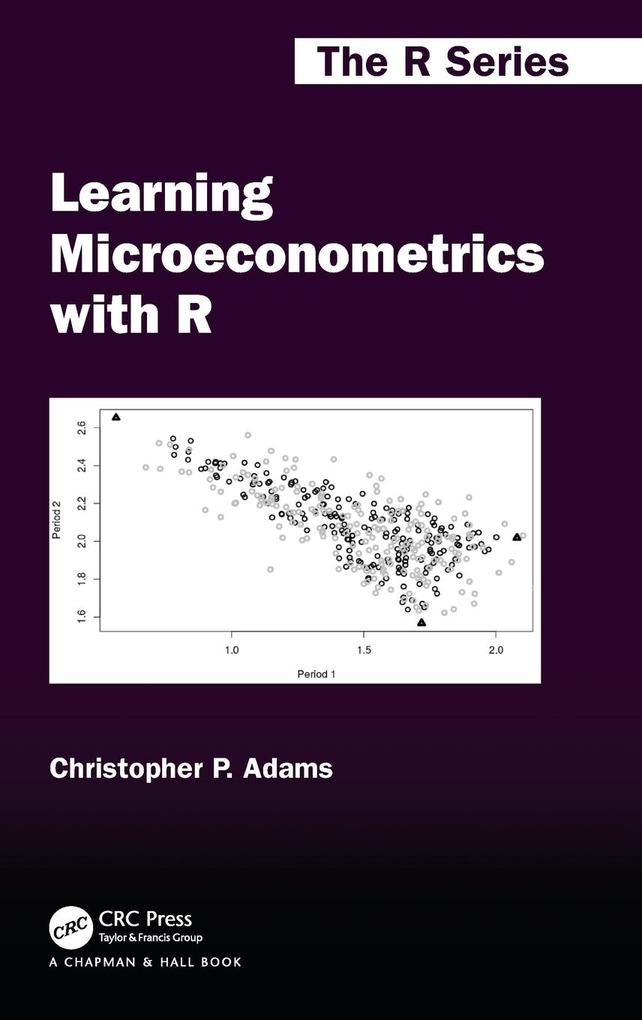
Zustellung: Mi, 06.08. - Sa, 09.08.
Versand in 7 Tagen
VersandkostenfreiThis book provides an introduction to the field of microeconometrics through the use of R. The focus is on applying current learning from the field to real world problems. It uses R to both teach the concepts of the field and show the reader how the techniques can be used. It is aimed at the general reader with the equivalent of a bachelor's degree in economics, statistics or some more technical field. It covers the standard tools of microeconometrics, OLS, instrumental variables, Heckman selection and difference in difference. In addition, it introduces bounds, factor models, mixture models and empirical Bayesian analysis.
Key Features:
- Focuses on the assumptions underlying the algorithms rather than their statistical properties.
- Presents cutting-edge analysis of factor models and finite mixture models.
- Uses a hands-on approach to examine the assumptions made by the models and when the models fail to estimate accurately.
- Utilizes interesting real-world data sets that can be used to analyze important microeconomic problems.
- Introduces R programming concepts throughout the book.
- Includes appendices that discuss some of the standard statistical concepts and R programming used in the book.
Inhaltsverzeichnis
I. Experiments.
1. Ordinary Least Squares.
2. Multiple Regression.
3. Instrumental Variables
4. Bounds Estimation.
II. Structural Estimation.
5. Estimating Demand.
6. Estimating Selection Models.
7. Demand Estimation with IV
8. Estimating Games.
9. Estimating Auction Models
III. Repeated Measurement.
10. Panel data.
11. Synthetic Controls.
12. Mixture Models.
IV. Appendices.
A. Measuring Uncertainty.
B. Statistical Programming in R
Acknowledgements
Bibliography
1. Ordinary Least Squares.
2. Multiple Regression.
3. Instrumental Variables
4. Bounds Estimation.
II. Structural Estimation.
5. Estimating Demand.
6. Estimating Selection Models.
7. Demand Estimation with IV
8. Estimating Games.
9. Estimating Auction Models
III. Repeated Measurement.
10. Panel data.
11. Synthetic Controls.
12. Mixture Models.
IV. Appendices.
A. Measuring Uncertainty.
B. Statistical Programming in R
Acknowledgements
Bibliography
Mehr aus dieser Reihe
Produktdetails
Erscheinungsdatum
30. Dezember 2020
Sprache
englisch
Untertitel
72 SW-Abbildungen, 40 Tabellen.
Sprache: Englisch.
Seitenanzahl
400
Reihe
Chapman & Hall/CRC The R Series
Autor/Autorin
Christopher P. Adams
Illustrationen
72 SW-Abb., 40 Tabellen
Verlag/Hersteller
Produktart
gebunden
Abbildungen
72 SW-Abb., 40 Tabellen
Gewicht
763 g
Größe (L/B/H)
240/161/26 mm
ISBN
9780367255381
Entdecken Sie mehr
Pressestimmen
'The book offers a great set of statistical and econometric methods useful not only in microeconometrics but in many other fields where the statistical modeling is needed. At the same time, it is a great source of the R programming, particularly, in data simulation and solving complex problems. The whole volume is saturated with R scripts, examples of the language application to numerous aims, and each chapter suggests multiple links to the internet websites related to the topics under consideration. Bibliography of more than eighty sources is also supplied. The book presents an incredibly useful source of information on the modern statistical techniques and their implementations to solving various real-life problems, that makes it very helpful to students and researchers in their projects.'
- Stan Lipovetsky, Technometrics, Vol. 63, Issue 3, August 2021
Bewertungen
0 Bewertungen
Es wurden noch keine Bewertungen abgegeben. Schreiben Sie die erste Bewertung zu "Learning Microeconometrics with R" und helfen Sie damit anderen bei der Kaufentscheidung.




























